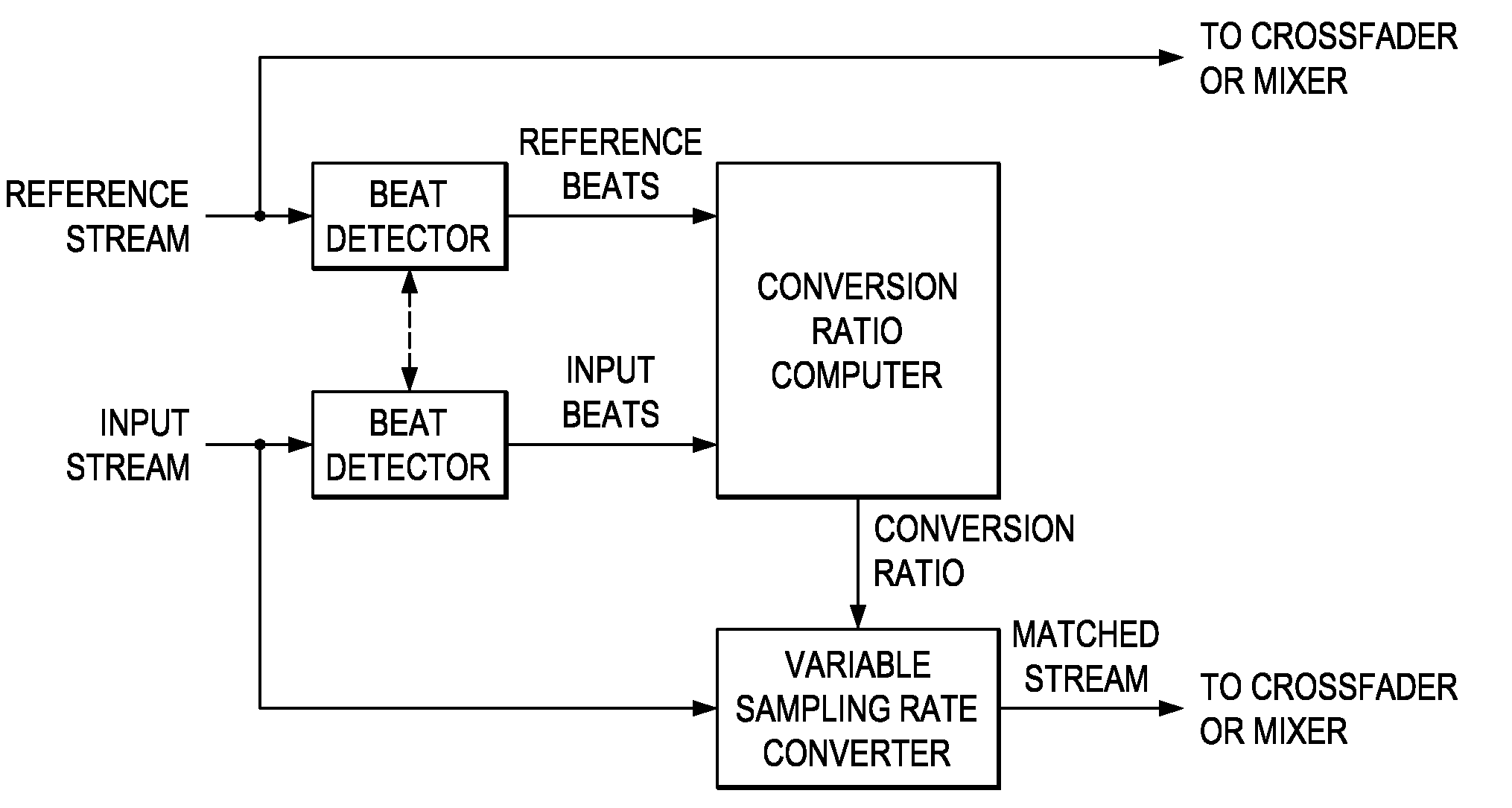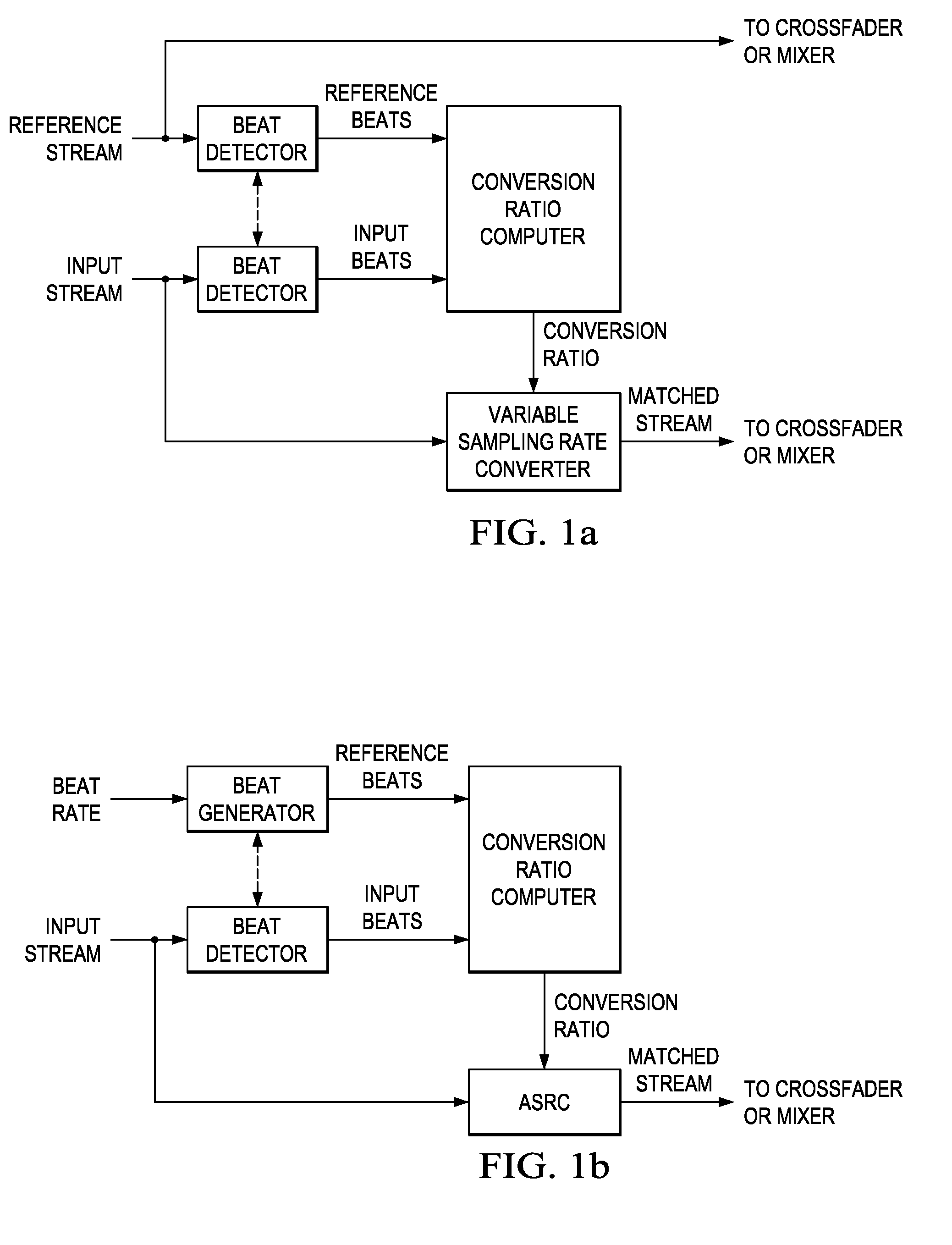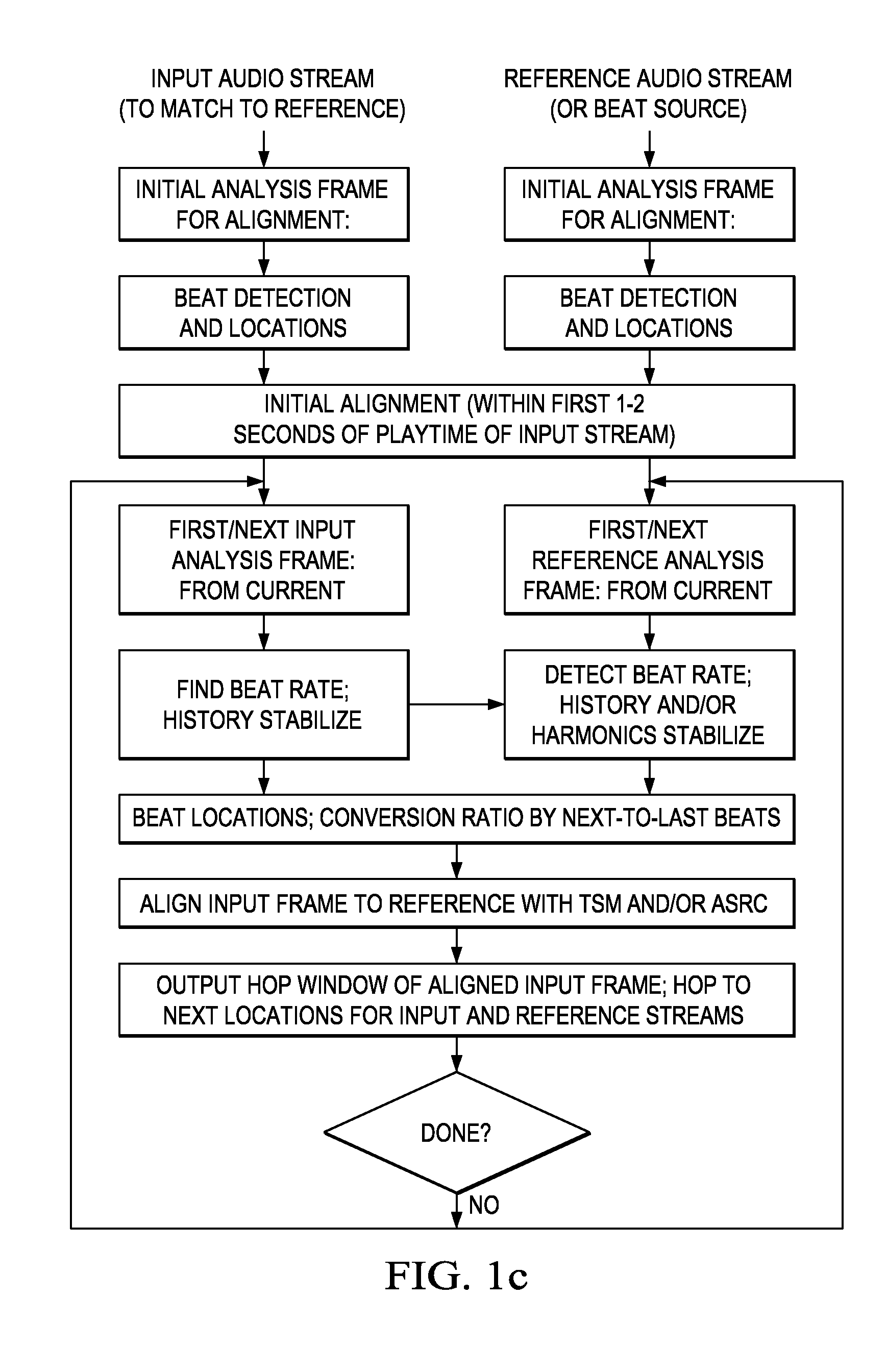Beat matching for portable audio
a portable audio and beat matching technology, applied in the field of electronic devices, can solve the problems of unnatural sounding audio outputs, limited applicability of computational complexity of scheirer, etc., and achieve the effect of avoiding harmonic jumps and minimizing time-scale modifications
- Summary
- Abstract
- Description
- Claims
- Application Information
AI Technical Summary
Benefits of technology
Problems solved by technology
Method used
Image
Examples
first preferred embodiment beat matching
[0023]FIG. 1a illustrates functional blocks of a first preferred embodiment beat matching architecture which includes beat detectors, a conversion ratio computer, and a variable sampling rate converter; FIG. 1c is a flowchart. Sections 6 and 7 below describe a beat detector and a variable sampling rate converter, respectively.
[0024]The first preferred embodiment methods start with an initial alignment of the input digital audio stream to the reference stream by alignment of a beat detected near the beginning of the input stream with a beat detected in the reference stream, and then continue with beat-matching on a frame-by-frame basis using a variable sampling rate converter to modify the input stream to beat match the reference stream. The frames are 10-second intervals of stream samples, and adjacent frames have about a 50% overlap. Note that a 10-second interval corresponds to 441,000 samples when a stream has a 44.1 kHz sampling rate. Also, a tempo of 120 beats per minute (bpm) ...
second preferred embodiment
[0042]FIG. 3 shows a second preferred embodiment beat matching architecture which differs from that of FIG. 1a by replacement of the variable sampling rate converter with a time scale modifier (TSM). This TSM module may be used with fixed input / output buffer sizes (depending upon the conversion ratio / playback speed) and may have a playback speed resolution of 0.125. However, if the input / output buffer sizes were more flexible, this playback speed resolution could be much finer, allowing any change in playback speed with no pitch distortion artifacts. The previously described method with TSM replacing ASRC and the flowchart of FIG. 1c apply for the second preferred embodiment methods.
third preferred embodiment
[0043]FIG. 4a shows a third preferred embodiment beat matching architecture which differs from that of FIGS. 1a and 3 by replacement of the ASRC or the TSM with a combination of a TSM followed by an ASRC. The TSM performs coarse adjustments to the time scale without causing the pitch distortion which exists in sampling rate converters generally. After the TSM, the ASRC performs a much finer pitch adjustment. Note that the order of the TSM and ASRC modules could be switched while still attaining the same beat-matching functionality. Again, the flowchart FIG. 1c and (with adaptations) the previously described methods provide the third preferred embodiment methods.
[0044]In particular, a third preferred embodiment method first computes the overall conversion ratio (R[n]) necessary to align the input stream beats in the nth frame to the reference stream (or beat source) beats; next, TSM and ASRC conversion ratios (RTSM[n] and RASRC[n]) are computed as:
RTSM[n]=└R[n] / 8+1 / 16┘
RASRC[n]=R[n] / R...
PUM
 Login to View More
Login to View More Abstract
Description
Claims
Application Information
 Login to View More
Login to View More - R&D
- Intellectual Property
- Life Sciences
- Materials
- Tech Scout
- Unparalleled Data Quality
- Higher Quality Content
- 60% Fewer Hallucinations
Browse by: Latest US Patents, China's latest patents, Technical Efficacy Thesaurus, Application Domain, Technology Topic, Popular Technical Reports.
© 2025 PatSnap. All rights reserved.Legal|Privacy policy|Modern Slavery Act Transparency Statement|Sitemap|About US| Contact US: help@patsnap.com



